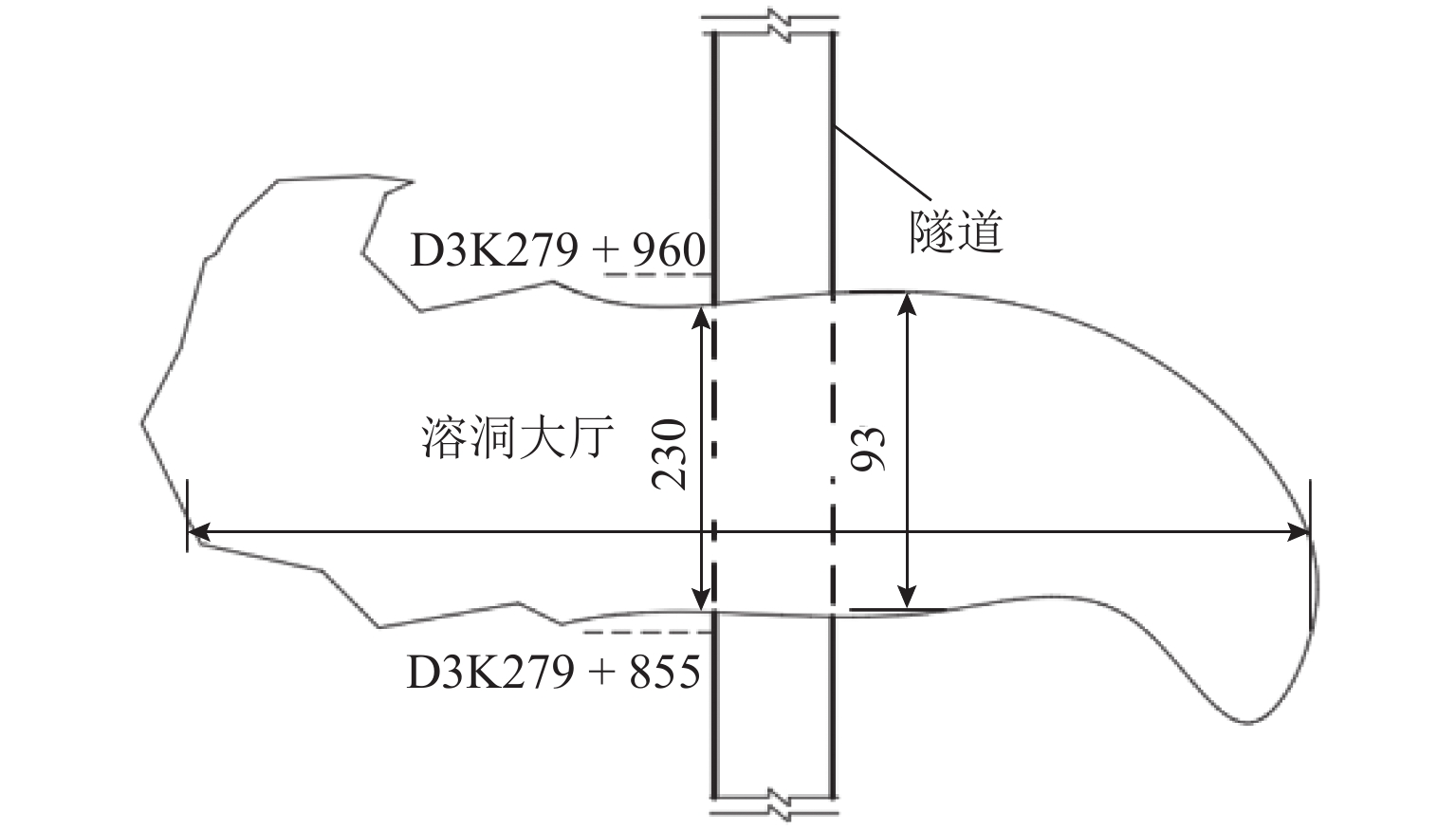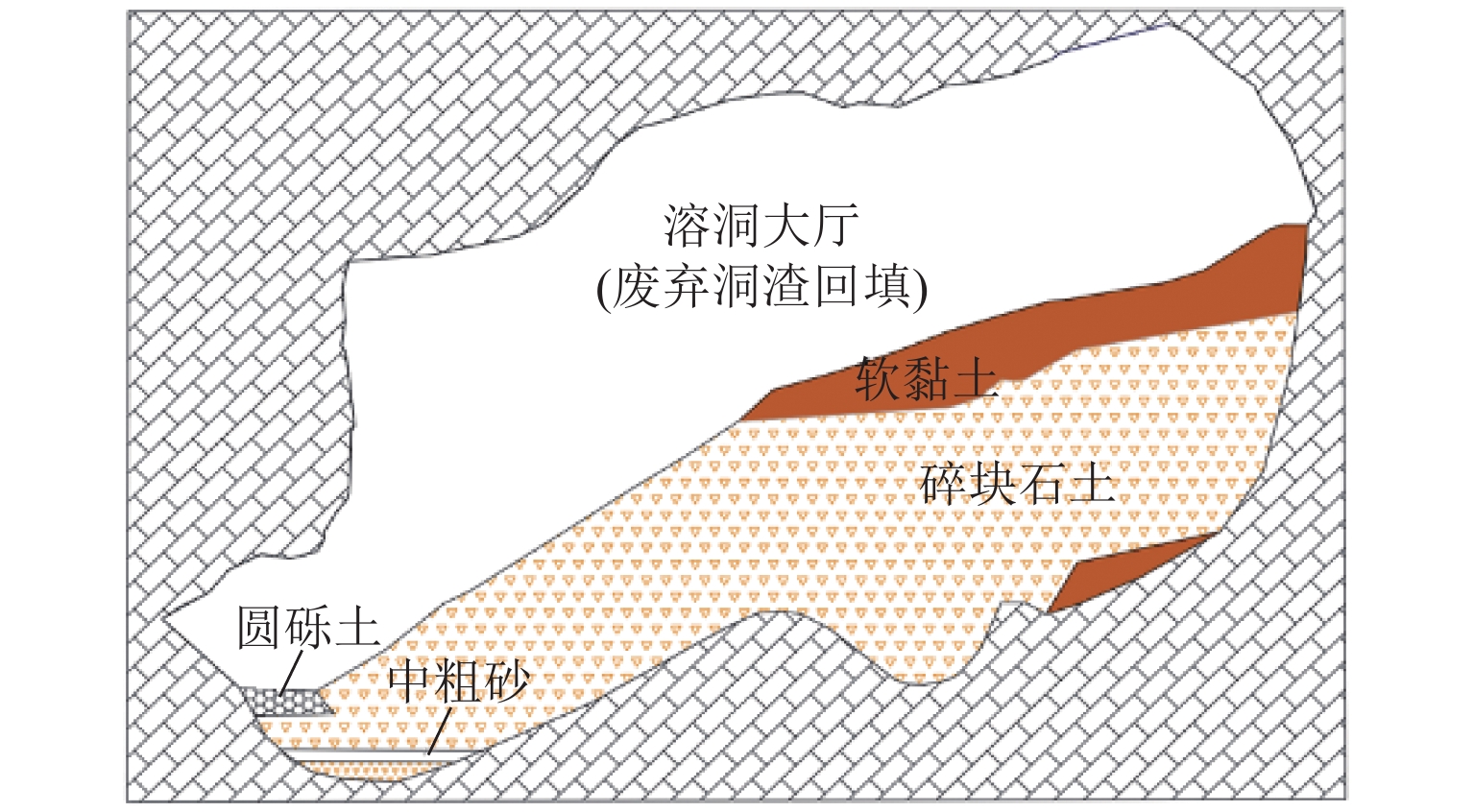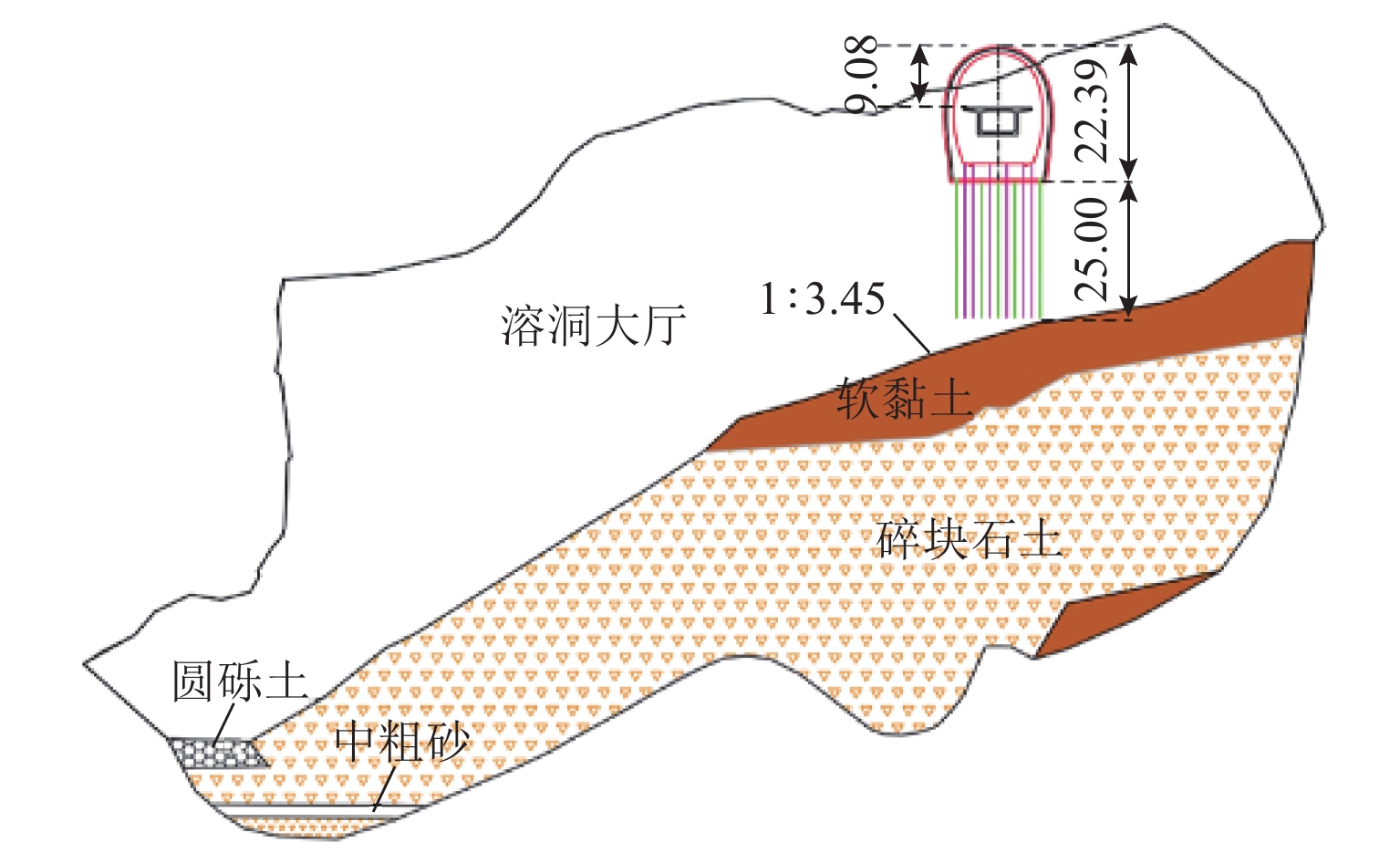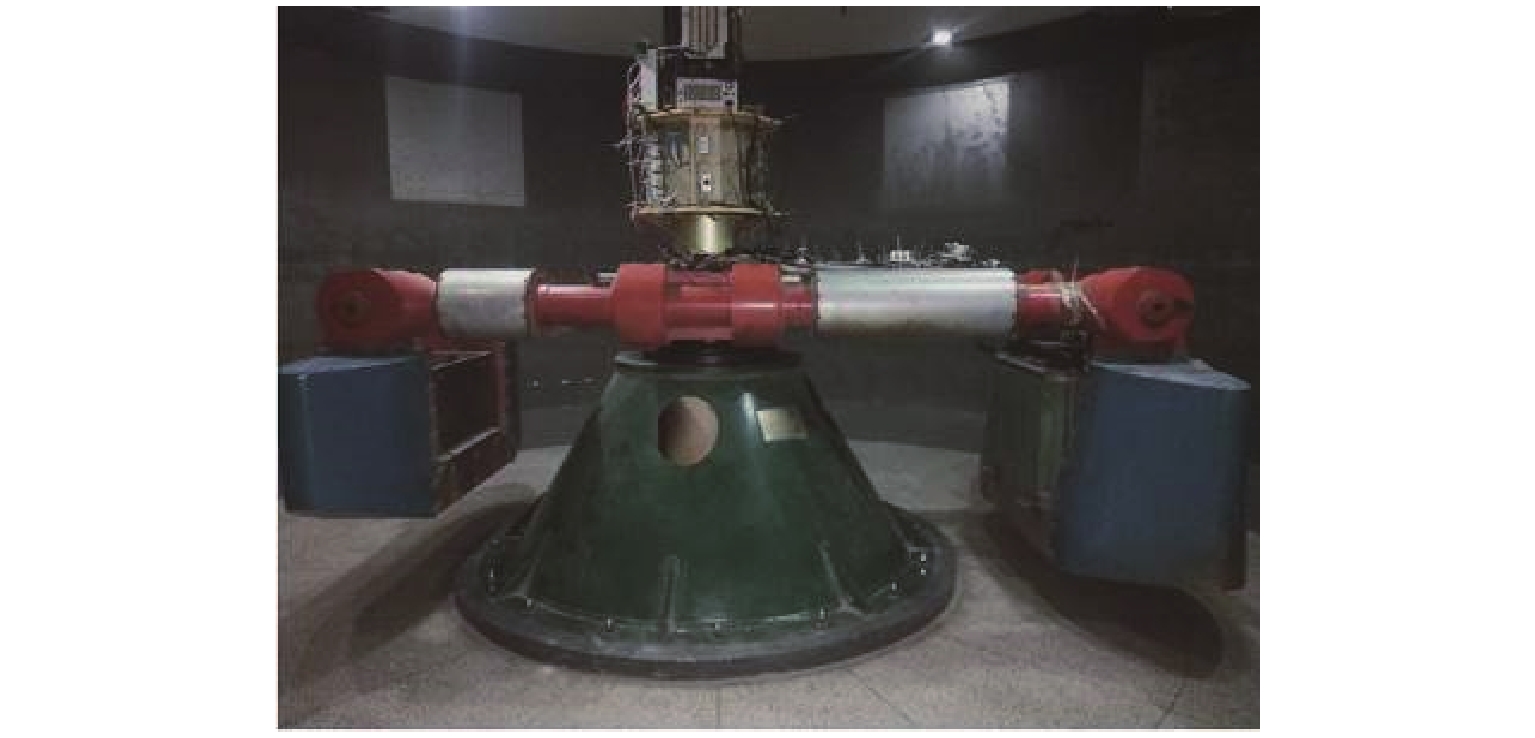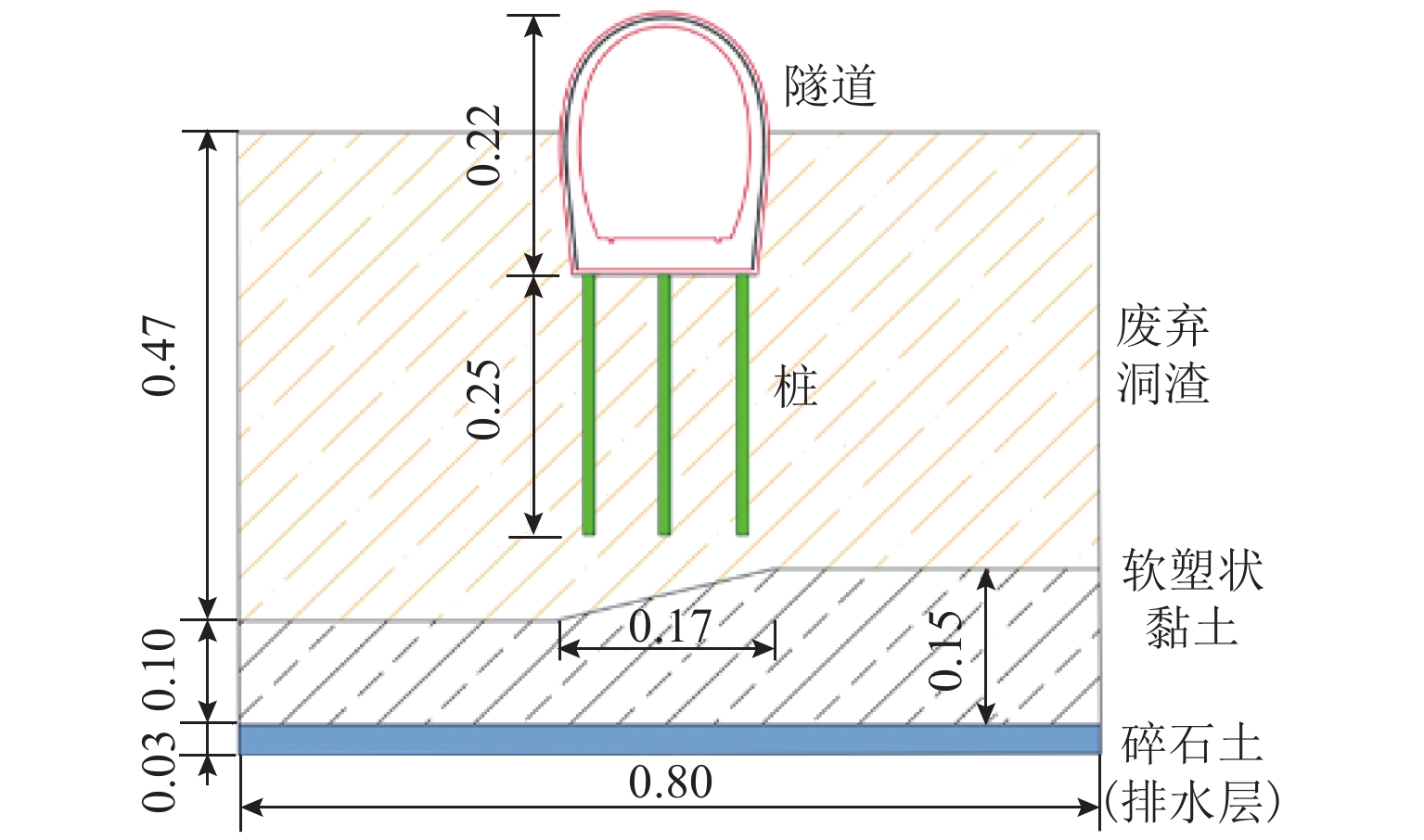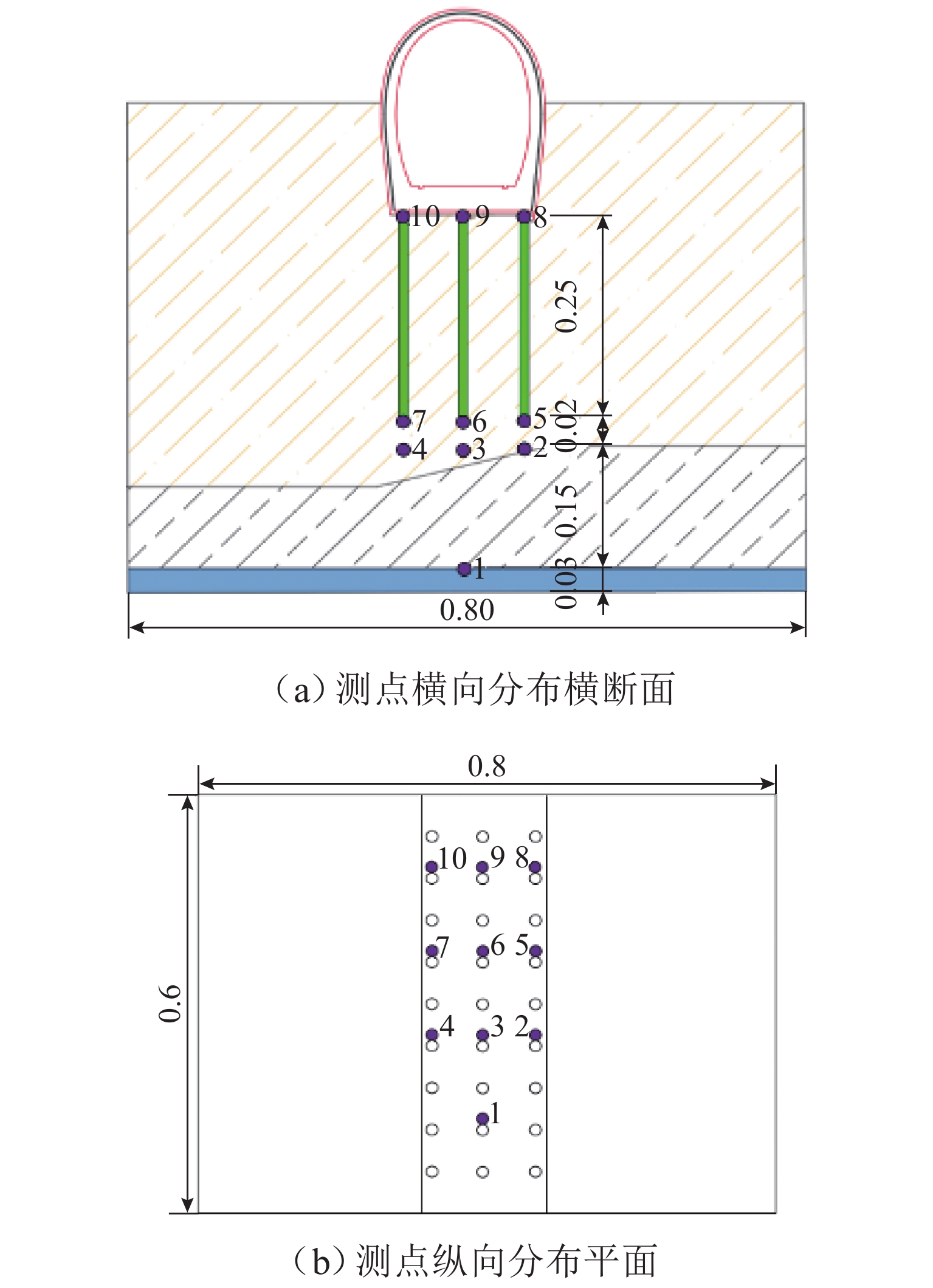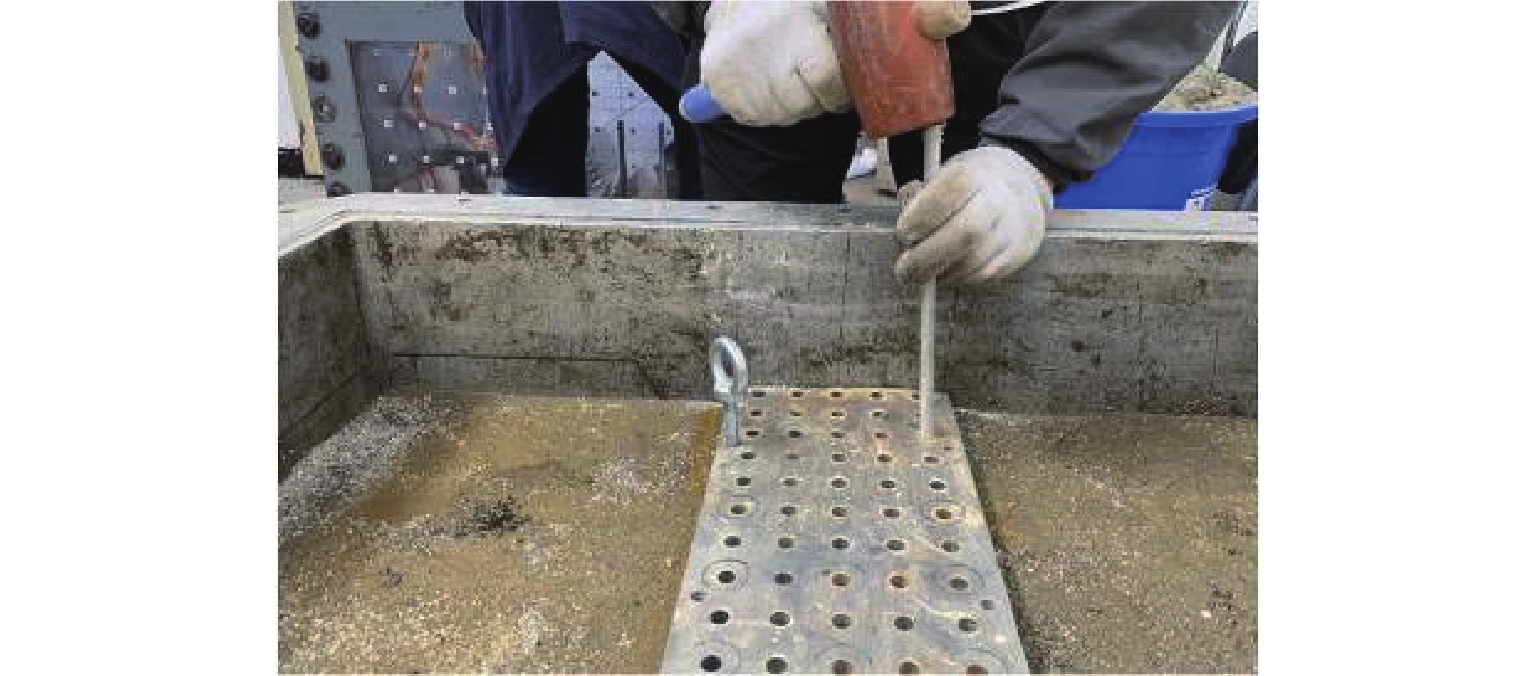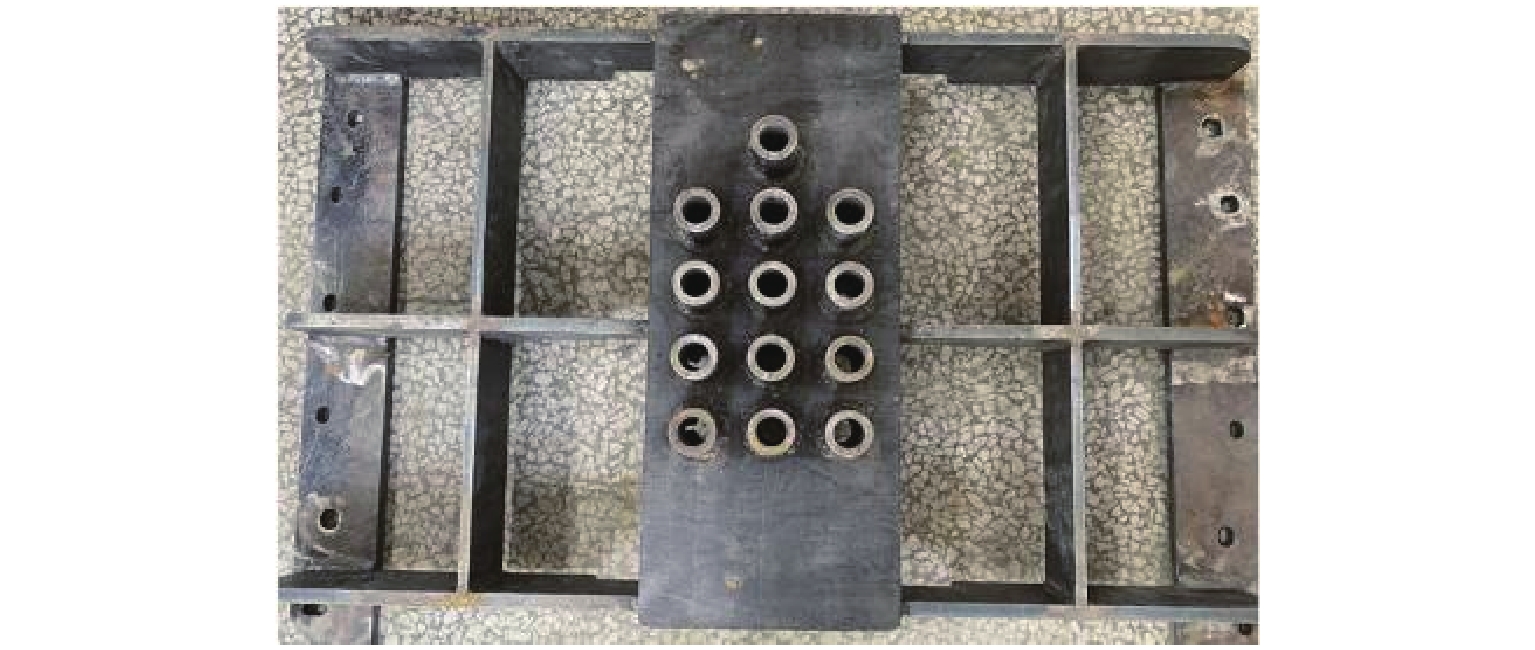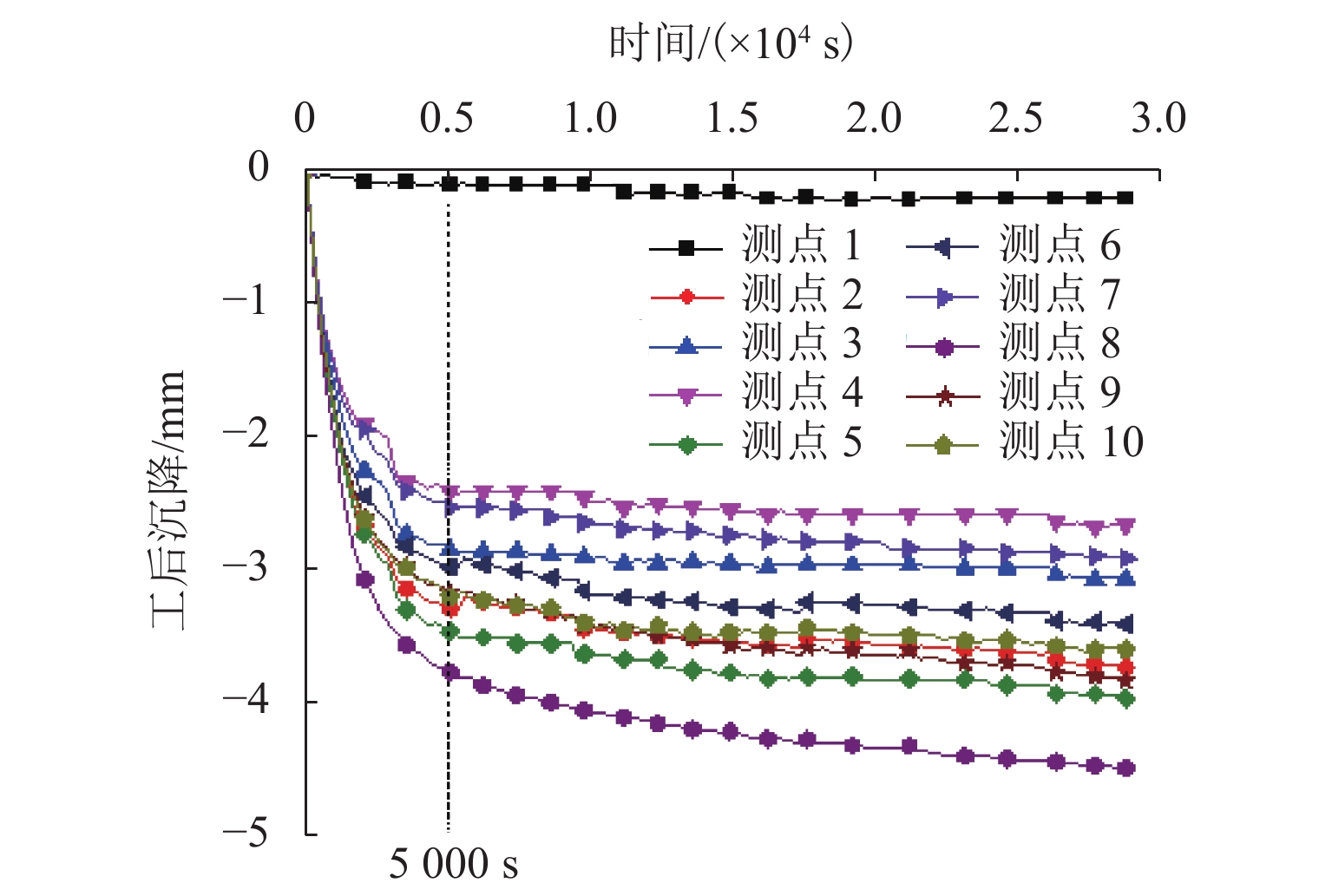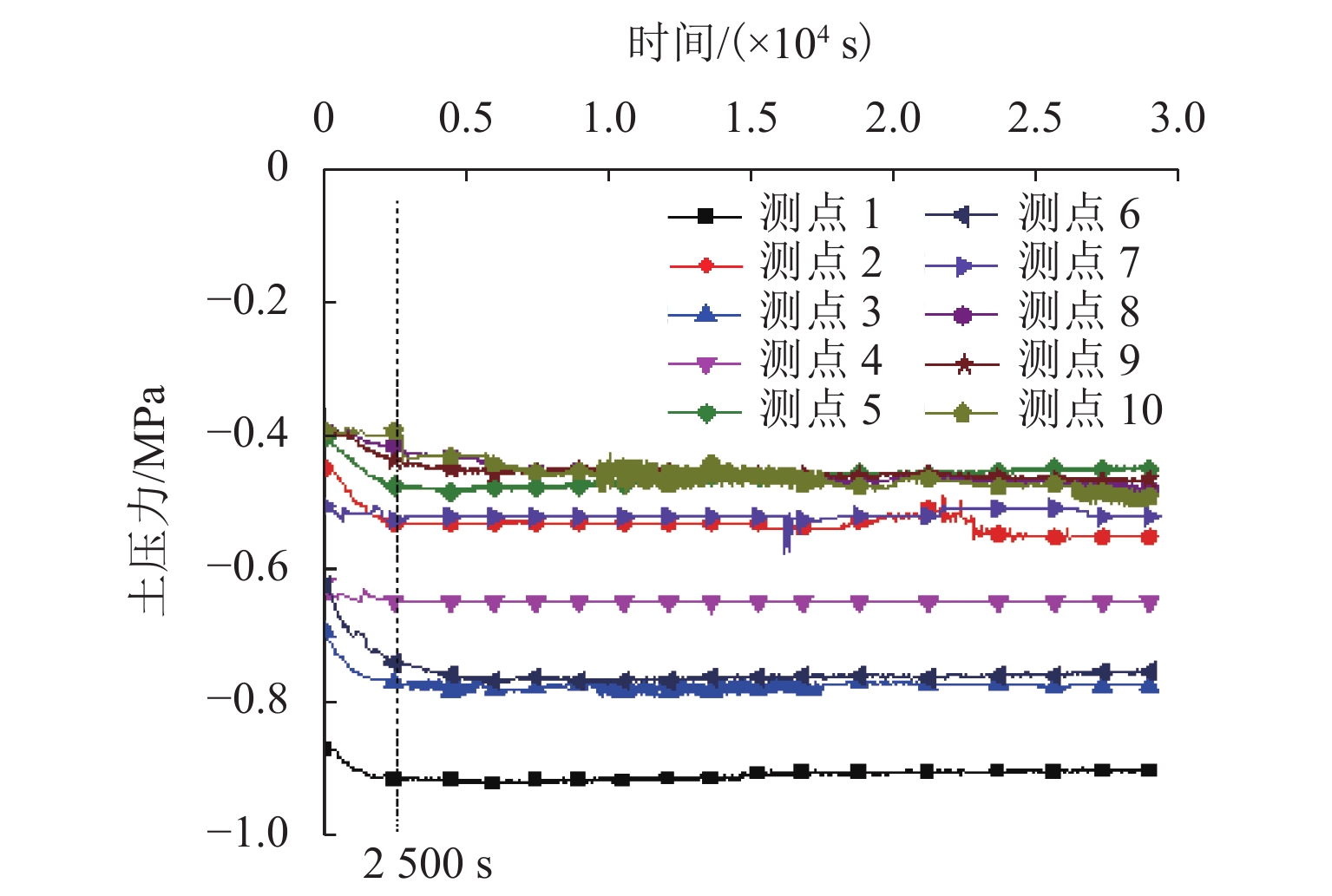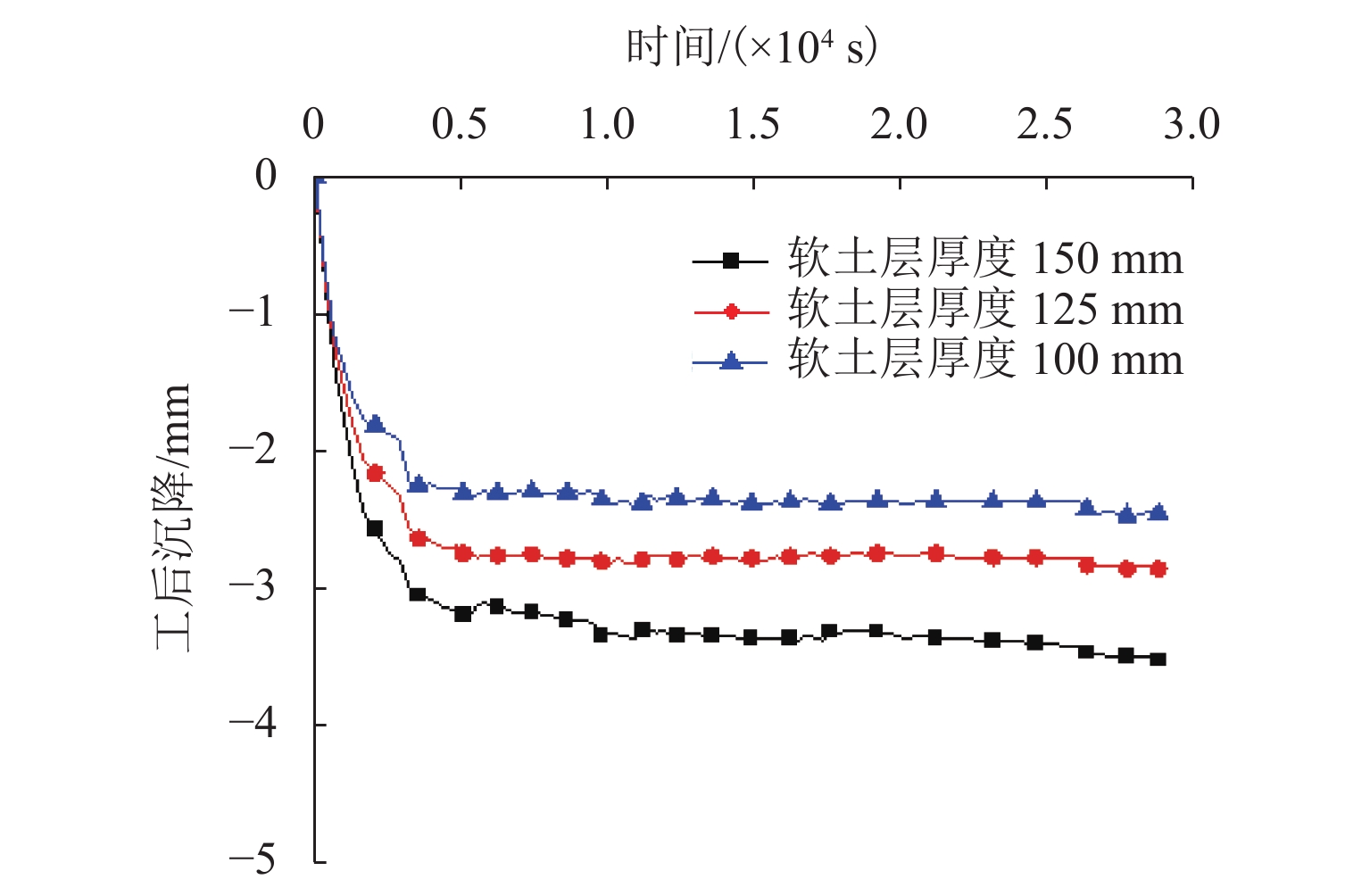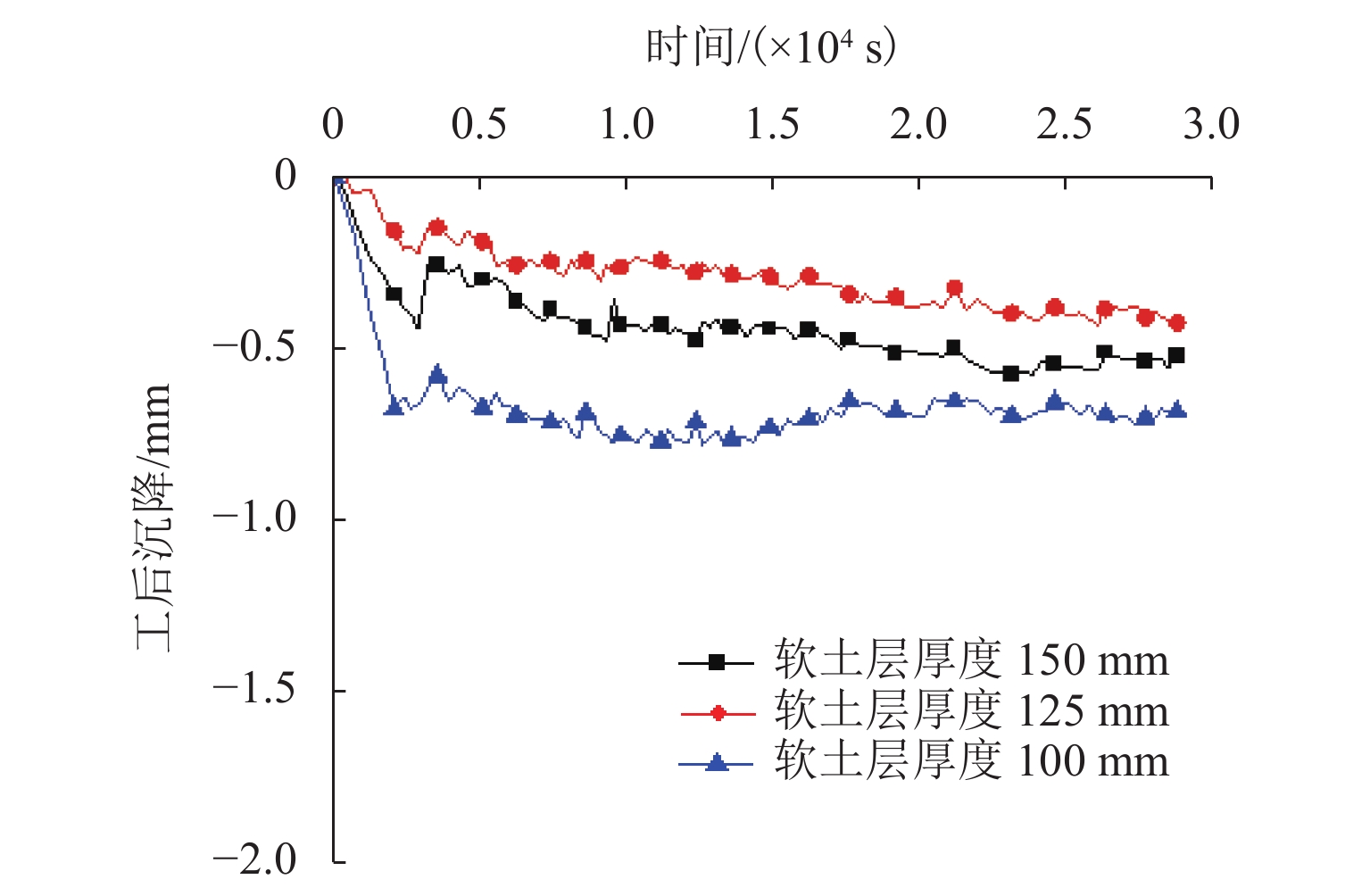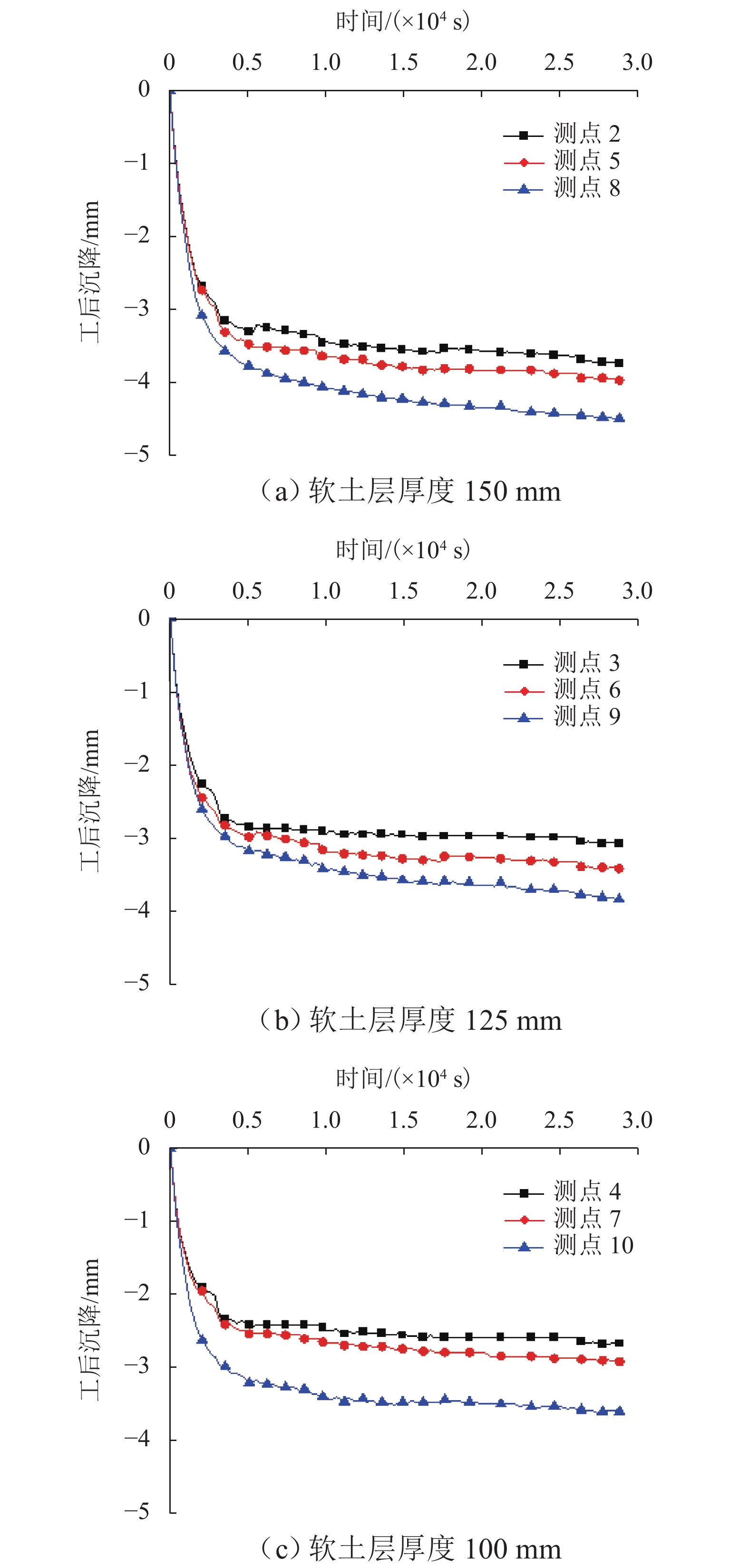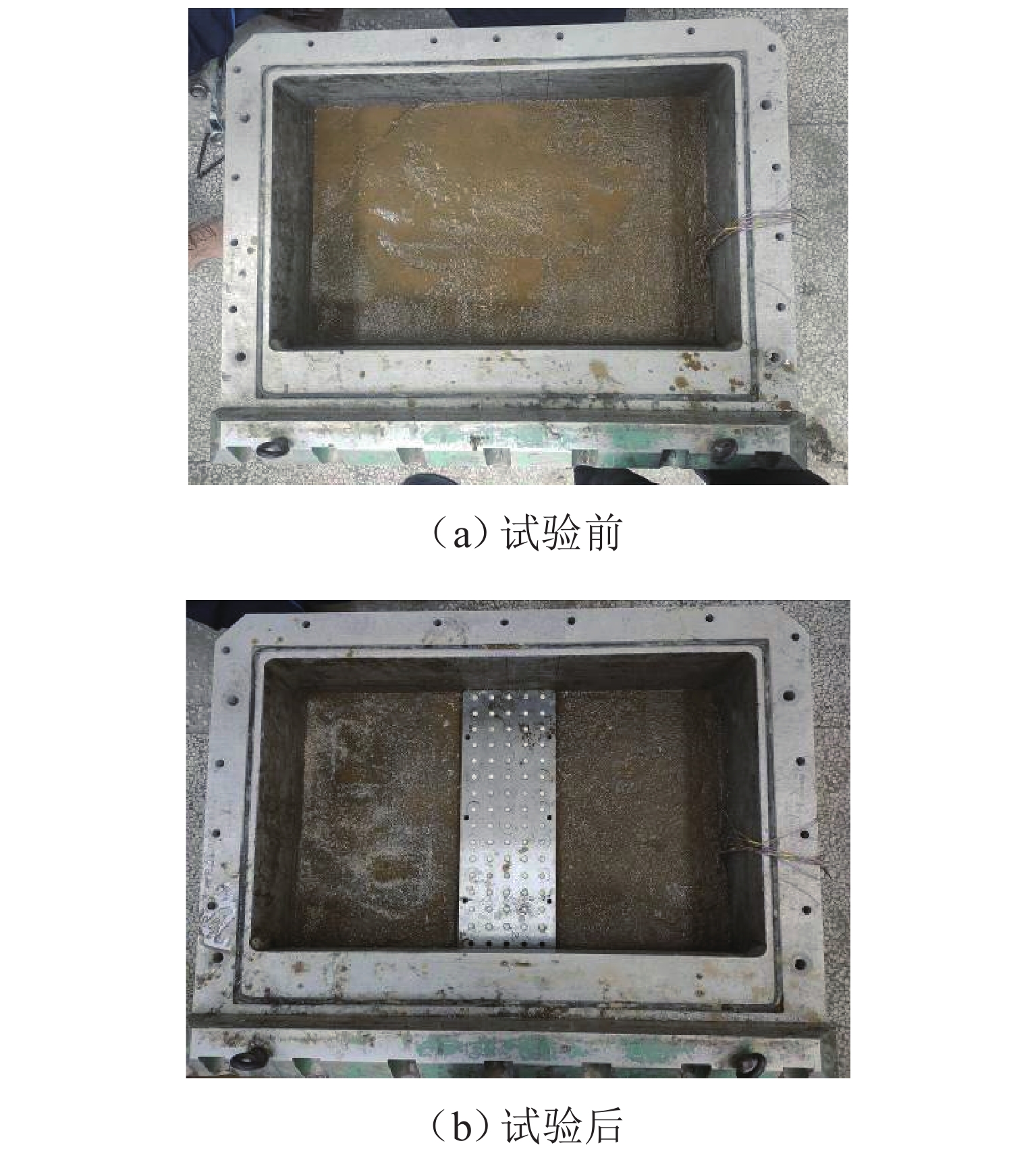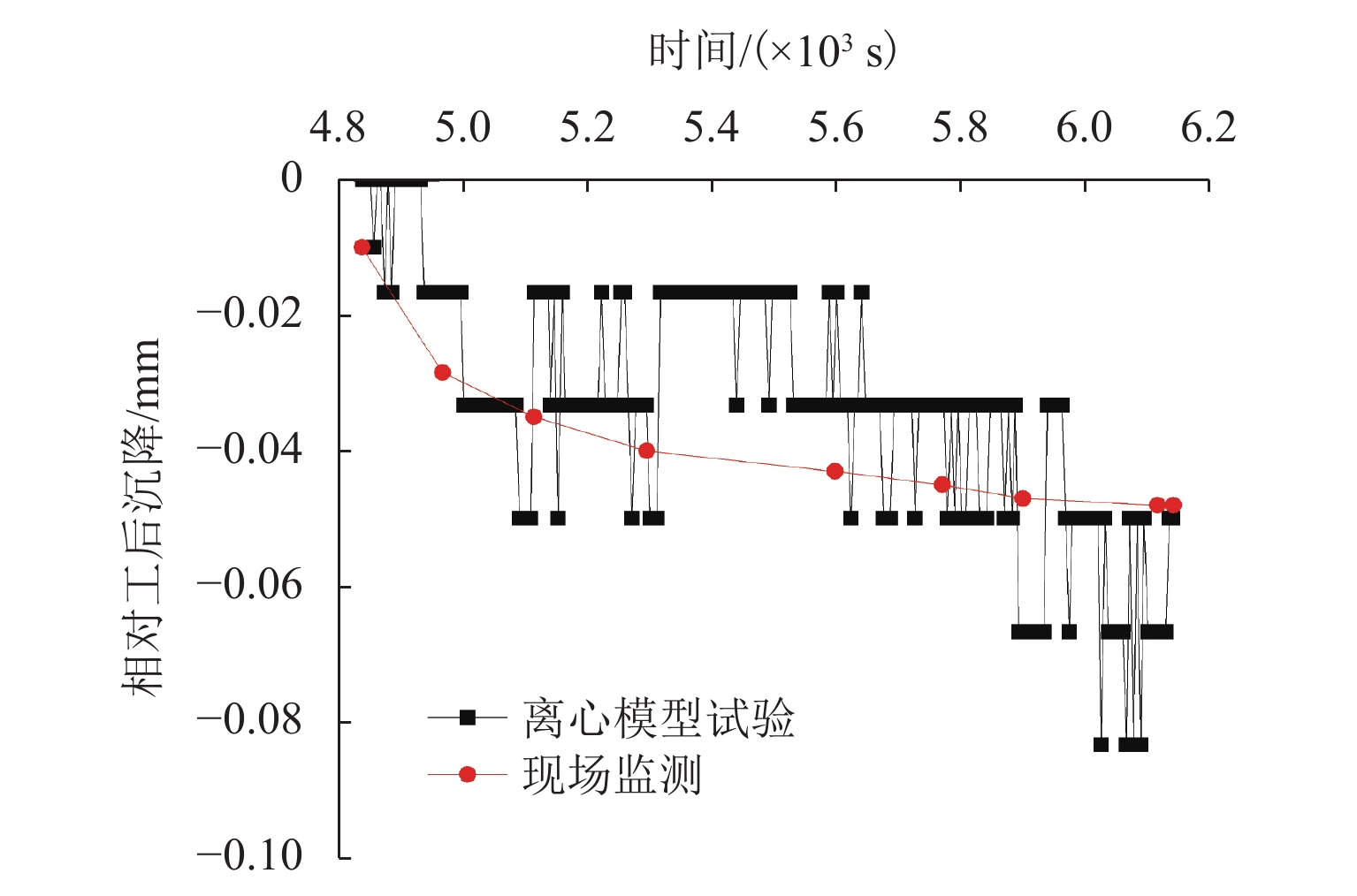Experimental Study on Long-Term Deformation Characteristics of Deep and Thick Fills in Giant Karst Cave
-
摘要:
为探讨不同深度位置溶洞回填体与天然堆积层的沉降和应力随时间的变化规律,以成贵铁路玉京山隧道大型溶洞回填工程为原型,开展1∶100的室内离心模型试验,对溶洞大厅底部不均匀天然软弱堆积层长期变形规律进行分析,采用粒径小于2 mm的河沙模拟废弃洞渣回填体,使用川西黏土模拟溶洞底部软土层,并用现场监测结果验证室内试验可靠性. 研究结果表明:施工结束后1.5年,溶洞回填体变形基本达到稳定状态,且变形量约为总沉降量的86.9%;软土层的变形是隧道底部土体变形的主要组成部分,其变形量约占总沉降的87.5%;隧底沉降量与底部软土层厚度成正相关,并且当软土层厚度小于12.5 cm时,软土层厚度对隧道底部沉降影响较小;模型试验沉降变形与现场监测结果相差为3.83%,表明本文所开展试验能够反映出隧道底部土体长期变形特性.
Abstract:In order to explore the variation of settlement and stress of the karst cave backfill and natural accumulation layer at different depths, a giant karst cave backfill project in the Yujingshan tunnel of Chengdu—Guiyang railway was studied. A 1∶100 laboratory centrifugal model test was carried out to analyze the long-term deformation law of the inhomogeneous natural soft accumulation layer at the bottom of the karst cave, in which the river sand with a particle size of less than 2 mm was used to simulate the karst cave backfill, and the western Sichuan clay was used to simulate the soft soil layer at the bottom of the karst cave. The reliability of the laboratory test was verified by field monitoring results. The results show that the deformation of the karst cave backfill basically reaches a stable state within 1.5 years after the termination of construction, and the deformation is about 86.9% of the total settlement; the deformation of the soft soil layer is the main component of the soil deformation at the bottom of the tunnel, and its deformation accounts for about 87.5% of the total settlement. The settlement at the bottom of the tunnel is positively correlated with the thickness of the soft soil layer, and when the thickness of the soft soil layer is less than 12.5 cm, it has less influence on the settlement at the bottom of the tunnel. The difference in settlement deformation between the model test and the on-site monitoring is only 3.83%, indicating that the experiments conducted in this article can reflect the long-term deformation characteristics of the soil at the bottom of the tunnel.
-
表 1 离心模型试验相似常数(原型/模型)
Table 1. Similar constants in centrifugal model test (prototype/model)
物理量 相似比 物理量 相似比 长度 100∶1 密度 1∶1 面积 104∶1 孔隙比 1∶1 体积 106∶1 饱和度 1∶1 含水量 1∶1 重度 1∶100 应力 1∶1 应变 100∶1 泊松比 1∶1 弹性模量 1∶1 内摩擦角 1∶1 时间 104∶1 表 2 工程现场各类土体物理力学参数
Table 2. Physical and mechanical parameters of various soil in site
土层名称 密度/
(g·cm−3)黏聚
力/kPa内摩擦角/(°) 基本承载力/kPa 压缩模量/MPa 废弃洞渣 2.20 0 36.0 280.00 27.0 软塑状黏土 1.86 17.00 7.0 100.00 4.2 碎石土 2.30 0 38.0 400.00 65.0 表 3 试验河沙物理力学特性参数
Table 3. Physical and mechanical properties of river sand in tests
参数 干密度/(g·cm−3) 含水量/% 内摩擦角/(°) 黏聚力/kPa 压缩模量/MPa 最大孔隙比 最小孔隙比 数值 1.79 23.00 35.50 0 27.0 0.67 0.35 表 4 试验黏土物理力学特性参数
Table 4. Physical and mechanical properties of experimental clay
参数 最大干密度/
(g·cm−3)最优含水量/% 液限/% 塑限/% 内摩擦角/(°) 黏聚力/kPa 干密度/(g·cm−3) 含水量/% 压缩模量/MPa 数值 1.80 15.30 31.00 13.00 7.30 16.20 1.46 27.00 4.2 表 5 试验前后各土层参数比较
Table 5. Comparison of parameters of each soil layer before and after test
土层 试验前后 密度/(g·cm−3) 含水量/% 孔隙比 废弃洞渣模拟层 试验前 2.200 23.000 0.410 试验后 1.880 5.000 0.400 软土层 试验前 1.850 27.000 0.780 试验后 1.610 10.000 0.440 -
[1] 徐明,宋二祥. 高填方长期工后沉降研究的综述[J]. 清华大学学报(自然科学版),2009,49(6): 786-789.XU Ming, SONG Erxiang. Review of long-term settling of high fills[J]. Journal of Tsinghua University (Science and Technology), 2009, 49(6): 786-789. [2] 胡小明,余学明. 高填方黄土路堤的最优填筑密度分区研究[J]. 四川大学学报(工程科学版),2002,34(1): 40-43.HU Xiaoming, YU Xueming. Research on distributing zones of optimum density in high loess embankment[J]. Journal of Sichuan University (Engineering Science Edition), 2002, 34(1): 40-43. [3] 姚仰平,黄建,张奎,等. 机场高填方蠕变沉降的数值反演预测[J]. 岩土力学,2020,41(10): 3395-3404,3414.YAO Yangping, HUANG Jian, ZHANG Kui, et al. Numerical back-analysis of creep settlement of airport high fill[J]. Rock and Soil Mechanics, 2020, 41(10): 3395-3404,3414. [4] 赵建斌,申俊敏,董立山. 高填方涵洞受力特性现场测试及数值模拟研究[J]. 郑州大学学报(工学版),2014,35(3): 111-115. doi: 10.3969/j.issn.1671-6833.2014.03.027ZHAO Jianbin, SHEN Junmin, DONG Lishan. Field test and numerical simulation of mechanical characteristic of culverts under high embankments[J]. Journal of Zhengzhou University (Engineering Science), 2014, 35(3): 111-115. doi: 10.3969/j.issn.1671-6833.2014.03.027 [5] 王雯璐,赵江鹏,赵大军,等. 图珲公路高填方涵洞竖向荷载分布试验研究[J]. 地下空间与工程学报,2014,10(4): 794-798.WANG Wenlu, ZHAO Jiangpeng, ZHAO Dajun, et al. Experimental study on vertical load distribution of high-stacked culverts at Tumen–Hunchun highway[J]. Chinese Journal of Underground Space and Engineering, 2014, 10(4): 794-798. [6] 曹光栩. 山区机场高填方工后沉降变形研究[D]. 北京: 清华大学,2012. [7] 曹光栩,宋二祥,徐明. 山区机场高填方地基工后沉降变形简化算法[J]. 岩土力学,2011(增1): 1-5,26. [8] 朱才辉,李宁,刘明振,等. 吕梁机场黄土高填方地基工后沉降时空规律分析[J]. 岩土工程学报,2013,35(2): 293-301.ZHU Caihui, LI Ning, LIU Mingzhen, et al. Spatiotemporal laws of post-construction settlement of loess-filled foundation of Lüliang airport[J]. Chinese Journal of Geotechnical Engineering, 2013, 35(2): 293-301. [9] 张军辉,黄湘宁,郑健龙,等. 河池机场填石高填方土基工后沉降离心模型试验研究[J]. 岩土工程学报,2013,35(4): 773-778.ZHANG Junhui, HUANG Xiangning, ZHENG Jianlong, et al. Centrifugal model tests on post-construction settlement of high embankment of Hechi airport[J]. Chinese Journal of Geotechnical Engineering, 2013, 35(4): 773-778. [10] 李秀珍,许强,孔纪名,等. 九寨黄龙机场高填方地基沉降的数值模拟分析[J]. 岩石力学与工程学报,2005,24(12): 2188-2193. doi: 10.3321/j.issn:1000-6915.2005.12.031LI Xiuzhen, XU Qiang, KONG Jiming, et al. Numerical modeling analysis of settlements of high fill foundation for Jiuzai–Huanglong airport[J]. Chinese Journal of Rock Mechanics and Engineering, 2005, 24(12): 2188-2193. doi: 10.3321/j.issn:1000-6915.2005.12.031 [11] 刘飞成,张建经. 斜坡基底软土桩-网复合地基变形特性离心试验研究[J]. 岩石力学与工程学报,2018,37(1): 209-219.LIU Feicheng, ZHANG Jianjing. Centrifuge test on deformation characteristics of pile-geogrid composite foundation in soft soil under slope[J]. Chinese Journal of Rock Mechanics and Engineering, 2018, 37(1): 209-219. [12] 刘宏,张倬元,韩文喜. 用离心模型试验研究高填方地基沉降[J]. 西南交通大学学报,2003,38(3): 323-326.LIU Hong, ZHANG Zhuoyuan, HAN Wenxi. Centrifugal model tests for settlement of high embankment[J]. Journal of Southwest Jiaotong University, 2003, 38(3): 323-326. [13] 郑建国,曹杰,张继文,等. 基于离心模型试验的黄土高填方沉降影响因素分析[J]. 岩石力学与工程学报,2019,38(3): 560-571.ZHENG Jianguo, CAO Jie, ZHANG Jiwen, et al. Analysis of influencing factors of high loess-filled foundations based on centrifugal model tests[J]. Chinese Journal of Rock Mechanics and Engineering, 2019, 38(3): 560-571. [14] 曹杰,郑建国,张继文,等. 不同边界条件下黄土高填方沉降离心模型试验[J]. 中国水利水电科学研究院学报,2017,15(4): 256-262.CAO Jie, ZHENG Jianguo, ZHANG Jiwen, et al. Centrifuge model tests of loess high-filled settlement under different boundary condations[J]. Journal of China Institute of Water Resources and Hydropower Research, 2017, 15(4): 256-262. [15] 孟庆山,孔令伟,郭爱国,等. 高速公路高填方路堤拼接离心模型试验研究[J]. 岩石力学与工程学报,2007,26(3): 580-586.MENG Qingshan, KONG Lingwei, GUO Aiguo, et al. Centrifugal modeling test study on high-embankment widening of highway[J]. Chinese Journal of Rock Mechanics and Engineering, 2007, 26(3): 580-586. [16] FENG S Y, XU R Q, CHENG K, et al. Centrifuge model test on the performance of geogrid-reinforced and pile-supported embankment over soft soil[J]. Soil Mechanics and Foundation Engineering, 2020, 57(3): 244-251. doi: 10.1007/s11204-020-09661-4 [17] JIE Y X, WEI Y J, WANG D L, et al. Numerical study on settlement of high-fill airports in collapsible loess geomaterials: a case study of Lüliang airport in Shanxi Province, China[J]. Journal of Central South University, 2021, 28(3): 939-953. doi: 10.1007/s11771-021-4655-4 [18] 冯国森. 铁路隧道巨型溶洞深厚回填体注浆固结技术——以黔张常铁路高山隧道为例[J]. 隧道建设(中英文),2020,40(12): 1791-1799.FENG GUOSEN. Grouting consolidation technology for deep and thick backfill of giant karst cave of railway tunnel: a case study on Gaoshan Tunnel on Qianjiang–Changde railway[J]. Tunnel Construction, 2020, 40(12): 1791-1799. [19] 林本涛,巩江峰. 朱砂堡二号隧道特大型岩溶空腔处理技术[J]. 高速铁路技术,2016,7(3): 91-96.LIN Bentao, GONG Jiangfeng. Treatment technology of super large larst cavity in Zhushabao No. 2 tunnel[J]. High Speed Railway Technology, 2016, 7(3): 91-96. [20] 李开兰,王明慧,王秋,等. 羊角一号隧道大型半充填溶洞处理措施研究[J]. 高速铁路技术,2019,10(6): 91-95.LI Kailan, WANG Minghui, WANG Qiu, et al. Discussion on the treatment measures of large-scale half filled karst cave in Yangjiao No. 1 tunnel[J]. High Speed Railway Technology, 2019, 10(6): 91-95. [21] 王少辉,陈兆,蒋冲,等. 特大型溶洞隧道综合处治方案及施工技术[J]. 隧道建设,2017,37(6): 748-752. doi: 10.3973/j.issn.1672-741X.2017.06.015WANG Shaohui, CHEN Zhao, JIANG Chong, et al. Comprehensive treatment scheme and construction technologies for super-large karst tunnel[J]. Tunnel Construction, 2017, 37(6): 748-752. doi: 10.3973/j.issn.1672-741X.2017.06.015 [22] 张顺忠. 野三关隧道特大溶洞崩塌堆积体处治施工技术[J]. 隧道建设,2007,27(3): 59-61. doi: 10.3969/j.issn.1672-741X.2007.03.016ZHANG Shunzhong. Construction technology for tunnel sections passing through super-huge karst collapse accumulation body: case study on yesanguan tunnel[J]. Tunnel Construction, 2007, 27(3): 59-61. doi: 10.3969/j.issn.1672-741X.2007.03.016 [23] ZHENG Y C, HE S Y, YU Y, et al. Characteristics, challenges and countermeasures of giant karst cave: a case study of Yujingshan tunnel in high-speed railway[J]. Tunnelling and Underground Space Technology, 2021, 114: 103988. doi: 10.1016/j.tust.2021.103988 [24] PAN X D, FANG Y C, LAI Y, et al. Three-dimensional numerical modeling of water distribution tunnels in karst area[J]. Arabian Journal of Geosciences, 2020, 13(23): 1242.1-1242.7. [25] 国家能源局. 土工离心模型试验技术规程:DL/T 5102—2013[S]. 北京: 中国电力出版社,2014. -





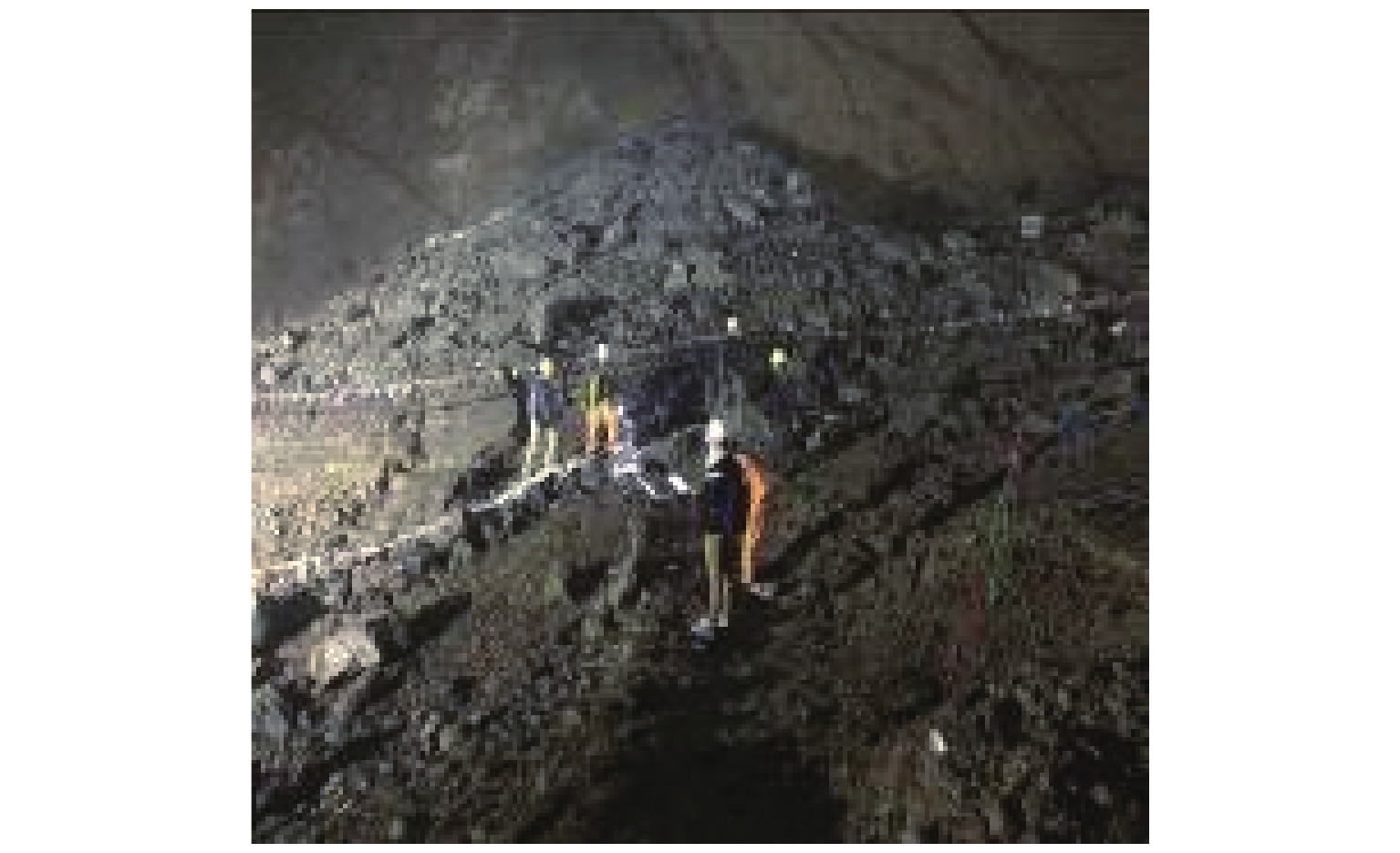
 下载:
下载:
